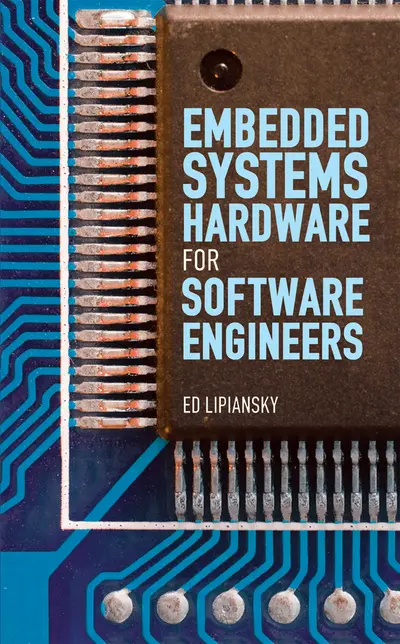My Account Details

ISBN10: 0071639489 | ISBN13: 9780071639484

Step 1 . Download Adobe Digital Editions to your PC or Mac desktop/laptop.
Step 2. Register and authorize your Adobe ID (optional). To access your eBook on multiple devices, first create an Adobe ID at account.adobe.com. Then, open Adobe Digital Editions, go to the Help menu, and select "Authorize Computer" to link your Adobe ID.
Step 3. Open Your eBook. Use Adobe Digital Editions to open the file. If the eBook doesn’t open, contact customer service for assistance.
Publisher's Note: Products purchased from Third Party sellers are not guaranteed by the publisher for quality, authenticity, or access to any online entitlements included with the product. A PRACTICAL GUIDE TO HARDWARE FUNDAMENTALS Embedded Systems Hardware for Software Engineers describes the electrical and electronic circuits that are used in embedded systems, their functions, and how they can be interfaced to other devices. Basic computer architecture topics, memory, address decoding techniques, ROM, RAM, DRAM, DDR, cache memory, and memory hierarchy are discussed. The book covers key architectural features of widely used microcontrollers and microprocessors, including Microchip's PIC32, ATMEL's AVR32, and Freescale's MC68000. Interfacing to an embedded system is then described. Data acquisition system level design considerations and a design example are presented with real-world parameters and characteristics. Serial interfaces such as RS-232, RS-485, PC, and USB are addressed and printed circuit boards and high-speed signal propagation over transmission lines are covered with a minimum of math. A brief survey of logic families of integrated circuits and programmable logic devices is also contained in this in-depth resource. COVERAGE INCLUDES: Architecture examples Memory Memory address decoding Read-only memory and other related devices Input and output ports Analog-to-digital and digital-to-analog converters Interfacing to external devices Transmission lines Logic families of integrated circuits and their signaling characteristics The printed circuit board Programmable logic devices Test equipment: oscilloscopes and logic analyzers
Chapter 2. Real Machines: Architecture Examples
Chapter 3. Embedded Hardware
Chapter 4. Memories
Chapter 5. Memory Address Decoding
Chapter 6. Read-Only Memories and Other Related Devices
Chapter 7. Input and Output Ports
Chapter 8. Data Acquisition Components: Analog-to-Digital and Digital-to-Analog Converters
Chapter 9. Interfacing to External Devices
Chapter 10. Transmission Line Basics
Chapter 11. Logic Families of Integrated Circuits and Their Signaling Characteristics
Chapter 12. The Printed-Circuit Board (PCB)
Chapter 13. Programmable Logic Devices
Chapter 14. Test Equipment: Oscilloscopes and Logic Analyzers
Index
Need support? We're here to help - Get real-world support and resources every step of the way.